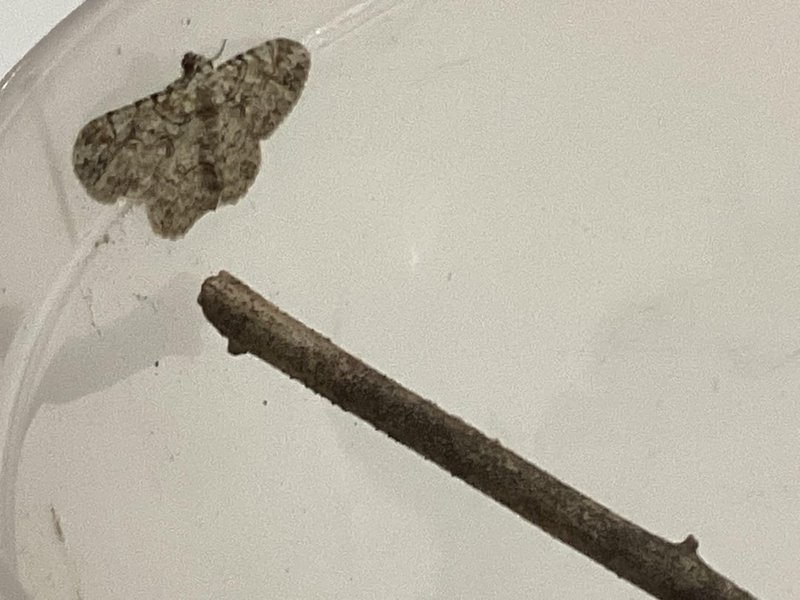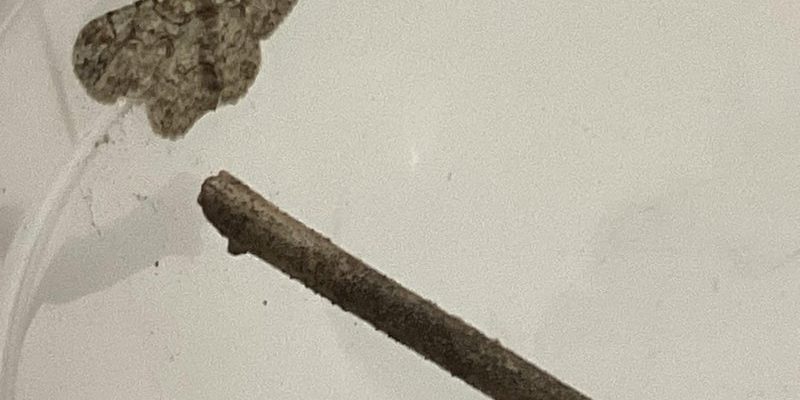
Think of attracting inchworm moths like hosting a nighttime gathering. Just like you’d set the mood with the perfect lighting for friends to feel welcome, inchworm moths are drawn to certain types of outdoor lights. It’s all about creating that inviting atmosphere. So grab a cup of coffee, and let’s dive into the world of inchworm moths and how to light up your yard to attract them.
What Are Inchworm Moths?
Inchworm moths are the adult form of caterpillars from the Geometridae family. You might spot them flitting about during warm months. They often have muted greens, browns, and grays, which help them blend in with their surroundings. This camouflage strategy keeps them safe from predators, but they also rely on light to navigate their world at night.
Interestingly, the name “inchworm” comes from their unique movement. They appear to inch forward, contracting and stretching their bodies as they go. If you’ve ever seen one, you’d understand why they’re so captivating. These moths are not just beautiful; they serve an essential role in the ecosystem by pollinating plants. Attracting them into your yard is not just a fun endeavor; it can also help your garden thrive.
The Best Outdoor Lights for Attracting Inchworm Moths
So, how do you create that inviting atmosphere? The type of light you use matters more than you might think. Here’s a breakdown of the best options for attracting inchworm moths:
- Low-Pressure Sodium Lights: These lights emit a yellow-orange glow, which is less harsh than other types. Moths tend to be attracted to warmer colors, making these a great choice.
- LED Lights: If you’re looking for energy-efficient options, LEDs can do the trick. Just make sure they have a warm color temperature.
- Incandescent Bulbs: Classic and cozy, incandescent bulbs can attract moths with their soft glow. However, they tend to use more energy.
- Black Light: If you want to make the evening magical, use black lights. They attract various insects, including inchworm moths, by illuminating their natural patterns.
Each type of lighting brings something different to your yard, so think about your preferences and your garden’s vibe.
When to Turn on the Lights
Timing is everything when it comes to attracting inchworm moths. They’re most active during warm summer nights, particularly between dusk and midnight. Here’s a tip: try turning on your lights just before it gets dark. This will create a welcoming beacon for any moths in the area.
While it might seem tempting to leave your lights on all night, consider moderating their use. Keeping the lights on too long can lead to tired, disoriented moths. You want them to feel attracted, not overwhelmed.
Placement of Lights Matters
Where you place your outdoor lights can greatly influence how many inchworm moths you attract. Here are some strategic spots to consider:
- Near Your Garden: Placing lights close to your plants can entice moths to come closer. They’ll be drawn to the lights and may even help pollinate your flowers.
- On Patios or Decks: Creating a cozy outdoor space where you can enjoy the company of inchworm moths can be delightful. Set up lights where you spend time in the evenings.
- Against Fences or Walls: Vertical surfaces can attract moths, especially if the lights are shining on them. This creates a beautiful display as moths flutter around.
Experiment with different placements to see what works best for you.
Creating a Moth-Friendly Environment
While lights are essential, they are just part of the equation. To truly attract inchworm moths, you need to create a welcoming environment. Here are some ideas:
1. **Plant Native Flowers:** Moths are naturally drawn to nectar-rich flowers. Consider adding plants like evening primrose or moonflower, which bloom at night.
2. **Minimal Pesticide Use:** Chemicals can deter moths and other beneficial insects. Consider organic gardening methods instead.
3. **Provide Shelter:** Adding shrubs or tall grasses can create a cozy spot for moths to rest during the day.
By making your yard a safe and inviting place, you encourage more inchworm moths to visit.
Common Mistakes to Avoid
Attracting inchworm moths may seem straightforward, but people often make a few common mistakes. Here are a few to keep in mind:
- Using Bright White Lights: While they might seem appealing, bright white lights can scare off moths instead of attracting them. Stick to warmer tones.
- Overlighting: Too many lights can create chaos. Use just enough lighting to attract without overwhelming the moths.
- Placement Errors: Not thinking about where to put your lights can lead to missed opportunities. Make sure they’re positioned well to entice visitors.
Avoiding these pitfalls can make your moth-attracting efforts much more successful.
Attracting inchworm moths with outdoor lights can turn your backyard into a magical nighttime haven. By choosing the right lights, timing their use, and creating a welcoming environment, you’ll increase your chances of seeing these fascinating creatures fluttering about. Hopefully, with a little patience and care, your evenings will soon be filled with their gentle presence. Now that you know the secrets, why not give it a try? Your garden—and the inchworm moths—will thank you!

